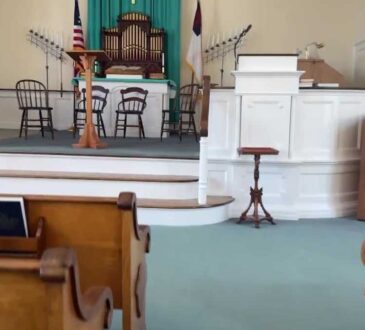The county millage rate will stay at $4.50 and the housing prices are leveling off so what is the root of a likely increase in property taxes for Palm Beach County homeowners?

Palm Beach County news: Charlie Woods’ golf game; Trump’s travel ban
Charlie Woods finished the Amateur Championship, Guy Fieri sells Lake Worth mansion, Donald Trump puts travel bans on twelve countries.
- Palm Beach County homeowners will likely see a property tax increase in 2026 due to rising property values, despite a stable millage rate.
- New construction fueled a significant portion of the nearly 8% increase in taxable property values.
- Sheriff Bradshaw’s budget, despite cuts, remains a significant portion of the county’s overall spending.
- The county faces budget challenges including presidential security costs and losses in state revenue sharing.
Palm Beach County commissioners are expected to maintain the millage rate at its current level of $4.50, but because of the continuing increase in property values, most homeowners will pay more in county taxes during calendar year 2026.
The millage rate is a tax rate per $1,000 of assessed property value. It’s a major source of the revenue that funds county government. Taxable values countywide have risen nearly 8%, according to preliminary estimates issued May 28 by Property Appraiser Dorothy Jacks. A total of $5 billion in new construction fueled much of that increase.
Homeowners whose taxable values have not increased this year may still see assessment increases. Florida has a 3% cap on property tax increases for homesteaded properties, a person’s primary residence. A state law requires appraisers to recapture the taxable value lost during years when overall property values exceeded that 3% cap.
For example, in 2023, values soared by more than 30%, but homesteaded properties only saw their assessments rise 3%. Now the property appraiser can raise assessments on those properties. The 3% cap, though, would still apply. Properties that are not homesteads can increase by 10% annually. Individual cities, schools, water districts, and other entities set their own millage rates.
At the end of a meeting on June 10, the county commission told budget officials to return July 8 with a spending plan that would maintain the millage rate at $4.50 per $1,000 of assessed value.
➤ Access The Palm Beach Post on the go with the app: Our app offers a personalized experience to your liking. Download our app to personalize your news alerts, swipe and scroll through stories faster, and bookmark them to save and read later.
The $4.50 county rate will generate revenues of $1.5 billion, representing a 7.4% increase or $105.4 million. On top of the county rate, taxpayers in unincorporated areas, generally west of Military Trail, will pay a millage rate of $3.46 for Fire Rescue and another 55 cents for the library system. Those two budgets have increased 7% and 6%, respectively.
So the millage rate of those functions is almost double the $4.50 that come under the direct control of county commissioners. While commissioners sign off on the library and Fire Rescue budget, the Office of Management and Budget does not scrutinize those spending plans the way it does departments that directly fall under its jurisdiction.
The total cost of all those county functions is $2.2 billion. The Sheriff’s Office and Fire Rescue consume nearly two-thirds of that figure.
When the school millage rate of more than $6 is considered, the amount county taxpayers pay in taxes for a $1 million home is about $10,000, and half that amount for a home assessed at $500,000.
Sheriff’s spending plan is record $1.1 billion
Former County Administrator Verdenia Baker, who retired June 1, called this year’s budget one of the most difficult she had ever put together. Budget officials ran into headwinds that included:
- $45 million in unanticipated presidential security costs to protect President Trump when he visits Mar-a-Lago in Palm Beach.
- A loss of $6 million in state revenue sharing.
- A loss of $7.6 million in revenue from the infrastructure sales tax that will disappear on Dec. 31.
- A loss of $3.3 million in electrical franchise fees.
Commissioners have again provided county employees with a 6% salary increase. The cost is $19 million. Baker argued that the increase was needed to fill vacancies and retain employees. The 6% salary increase is much less than what state employees are expected to receive. While the state budget has not yet been finalized, Florida Politics is reporting that the increase will be about 2%.
Sheriff Ric Bradshaw, tasked with providing security for President Trump, had agreed to an unprecedented budget cut of $37 million. Baker had long been concerned with the percentage rate of increases in Bradshaw’s budgets, arguing the increases were coming at the expense of funding critical county needs.. Even after the $37 million cut, the budget increased by nearly 13% this year.
Since 2019, the sheriff’s budget increased by a total of 62%. Before Baker’s retirement, Bradshaw was called on to cut an additional $20 million to help balance the overall county budget. However, Interim County Administrator Todd Bonlarron said budget officials have reached an agreement with Bradshaw to avoid that cut.
The county expects to generate an extra $10 million in property tax revenue by July 1, which will be allocated to the sheriff. Bradshaw is then set to receive another $10 million next March when mid-year budget adjustments are typically made. His spending plan now stands at a record $1.1 billion.
The county is hopeful that the federal government will reimburse it for the cost of presidential security, as it did during President Trump’s first term. But there is no guarantee it will happen. Should it occur, the money will be used to replenish the county’s reserve or surplus fund. Baker had said she it is important that reserves be increased to ensure the county will keep its AAA bond rating.
As for changes in the preliminary budget discussed in May, commissioners, at the June 10 meeting, called on staff to consider providing the county park system with PBSO security. Parks Director Jennifer Cirillo said the service was eliminated years ago, and there is a strong need for its return.
“Park rangers do not have enforcement powers and, too often, people illegally use our facilities,” she explained.
Cirillo has agreed to scale back her plans for charging fees to use athletic fields. She said organizations that are truly nonprofit and that consist of volunteers that include coaches who coach without a salary will be able to use the athletic fields for free. Other entities would be charged $5 an hour per field, a figure, she said, that is considerably less than what other area recreation departments charge.
“We have soccer coaches using our fields that are paid six-figures,” she said. “They are monetizing our fields. They should be paying to use them,” adding that instructors, without county permits, are also giving paid pickleball and tennis lessons.
Beachgoers using R.G. Kreusler Park and South Inlet Park will see parking fees increase to $4 an hour from $3 as of Oct. 1. The 12 county beach parks that are currently free will stay free.
The commission will officially set a millage rate on July 8. The first public hearing will be held Sept. 9, and final adoption of the budget will occur on Sept. 16. The fiscal 2026 budget will go into effect on Oct. 1.
Mike Diamond is a journalist at The Palm Beach Post, part of the USA TODAY Florida Network. He covers Palm Beach County government and transportation. You can reach him at mdiamond@pbpost.com. Help support local journalism. Subscribe today




